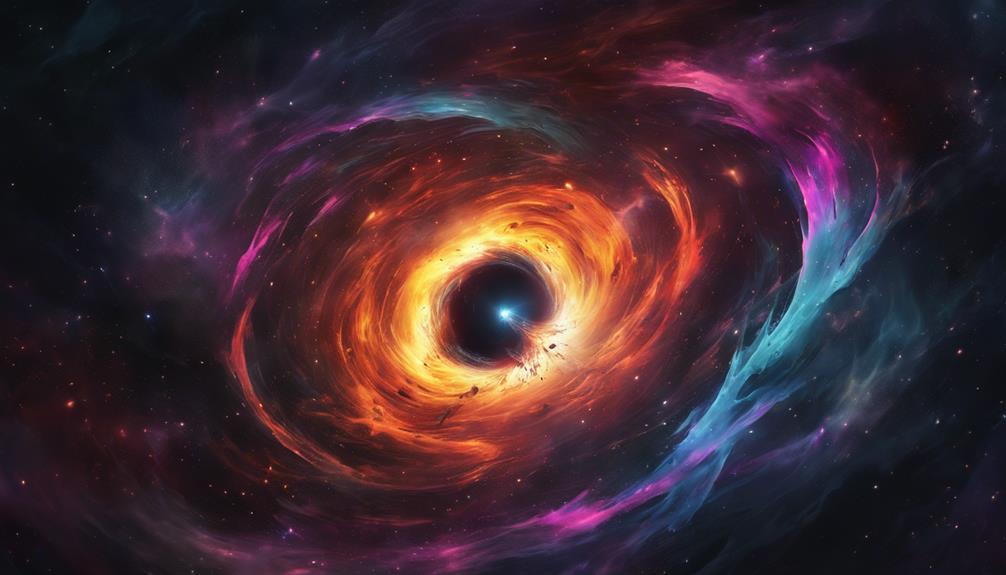The fate of the universe, a subject that has captivated the minds of scientists and theorists alike, remains a tantalizing mystery waiting to unfold. As we delve into the depths of cosmology, pondering the possible scenarios for the ultimate demise of our universe, we are confronted with a myriad of theories each more intriguing than the last. From the chilling prospect of the Big Freeze to the cataclysmic scenario of the Big Rip, the universe's destiny hangs delicately in the balance, with dark energy and dark matter casting long shadows over our understanding. The quest to decipher the final chapter of the cosmos continues, beckoning us to explore the unfathomable endings that await us.
Key Takeaways
- The universe's fate may involve scenarios like the Big Freeze, Big Rip, Big Bounce, or Vacuum Decay.
- Dark energy, dark matter, and the cosmological constant heavily influence cosmic destiny.
- Cosmic evolution uncertainties persist due to complex models and limited knowledge.
- Observations of cosmic phenomena and spatial structures aid in predicting the universe's ultimate fate.
The Big Freeze Theory

The Big Freeze Theory postulates the eventual fate of the universe as a cold, dark expanse perpetually expanding under the relentless influence of dark energy. Dark energy, a mysterious force causing the universe to expand at an accelerating rate, plays a pivotal role in this scenario. As galaxies drift further apart, star formation dwindles, leading to a universe devoid of light, warmth, and energy. Over incomprehensible timescales, the Big Freeze theory envisions a state where all matter is isolated, cooling down to near absolute zero. This cold and desolate cosmic expanse would witness the gradual fading of galaxies, stars, and even atoms into obscurity. Scientists regard the Big Freeze as the most probable fate of the universe based on current observations and the understanding of dark energy's impact on cosmic expansion. In this chilling future, the universe marches towards an eternal frozen expanse, where isolation and darkness reign supreme.
The Big Rip Hypothesis
The Big Rip Hypothesis postulates a cataclysmic fate for the universe, where the relentless expansion fueled by dark energy eventually overpowers the cohesive forces that bind matter together. This scenario envisions a violent tearing apart of cosmic structures, culminating in the fundamental dissolution of all material entities as the fabric of space itself is torn asunder. As dark energy's dominance grows unchecked, the universe faces a harrowing destiny where even the most fundamental components of existence succumb to the overwhelming forces of expansion.
Cosmic Expansion Accelerates
As cosmic expansion accelerates towards an ominous climax, the Big Rip hypothesis foretells a cataclysmic fate for the universe. Dark energy, the mysterious force driving the universe's accelerated expansion, plays a pivotal role in this apocalyptic scenario. The Big Rip suggests that dark energy's relentless increase will eventually overpower gravity, causing galaxies, stars, and even atoms to be torn apart. This ultimate fate of the universe, estimated to occur billions to trillions of years from now, paints a picture of complete disintegration, where all matter dissembles into oblivion. While theoretical, the Big Rip serves as a stark reminder of the universe's impermanence and the profound impact of dark energy on cosmic evolution.
Matter Torn Apart
With the relentless increase of dark energy potentially overpowering gravitational forces, the Big Rip hypothesis paints a cataclysmic picture of the universe's ultimate fate, where all cosmic structures, from galaxies to fundamental particles, face being torn asunder. Dark energy's accelerating rate of expansion in the universe would eventually lead to the overwhelming of gravitational forces that hold celestial bodies together. As this cosmic expansion continues unchecked, galaxies, stars, and even atoms would be torn apart, unable to withstand the powerful forces at play. The Big Rip hypothesis foresees a future where the fabric of the universe itself is torn apart, resulting in the disintegration of everything we know, marking a dramatic and destructive end to the cosmos.
Universe Rips Apart
Could the relentless expansion of dark energy ultimately lead to the catastrophic tearing apart of the universe in the Big Rip hypothesis? The Big Rip theory posits that as dark energy's repulsive force grows stronger over time, it will eventually overcome gravity, causing galaxies, stars, and even atoms to be torn apart. The timeline for this cataclysmic event is uncertain but could transpire billions of years from now, depending on the rate of expansion of the universe. If the Big Rip scenario unfolds, it would result in a dramatic end where not only matter but spacetime itself is ripped apart in an irreversible cosmic disintegration.
- Dark energy's repulsive force surpasses gravity.
- Galaxies, stars, and atoms disintegrate.
- Uncertain timeline, potentially billions of years in the future.
The Big Crunch Scenario
The Big Crunch Scenario postulates a universe in which all matter is drawn back into a central point due to gravitational forces, leading to a collapse of cosmic proportions. This theory challenges the current understanding of an ever-expanding universe and proposes a cyclical model of existence characterized by compression and rebirth. The implications of this scenario spark debates on the fate of the universe and the fundamental forces driving its evolution.
Collapse of Universe
In a universe governed by the relentless pull of gravity, the Big Crunch scenario looms as a cataclysmic fate, where the very fabric of spacetime collapses back upon itself under the weight of its own mass. This collapsing universe, driven by gravitational forces, signifies a reversal of cosmic expansion, leading to extreme density and heat. The concept proposed by Friedmann and Wheeler suggests that if the density of the universe overcomes the repulsive force of dark energy, all matter and energy would converge back into a singularity. This scenario stands in stark contrast to eternal expansion theories like the Big Freeze or the Big Rip, painting a vivid picture of a universe collapsing in on itself in a fiery and dense finale.
- The Big Crunch scenario predicts a dramatic collapse of the universe due to gravitational forces.
- It involves a reversal of the cosmic expansion, leading to extreme density and heat.
- This catastrophic end contrasts with theories of eternal expansion, offering a unique glimpse into a collapsing universe.
Reversal of Expansion
Portending a cosmic fate intertwined with gravitational dominance, the concept of a reversal of expansion, epitomized by the Big Crunch scenario, envisions a cataclysmic collapse of the universe towards a singular point. In this scenario, the universe, driven by gravitational attraction, would cease its expansion and begin contracting, eventually collapsing back into a singularity of infinite density. Initially popular, the Big Crunch hypothesis has waned in acceptance due to observations indicating the universe's accelerating expansion. Should the Big Crunch come to fruition, it would entail extreme temperatures and densities as all matter and energy are compressed into a tiny space. While a fascinating notion, the likelihood of the Big Crunch as the universe's ultimate fate is currently outweighed by other potential scenarios.
Cosmic Compression Theory
Evidencing a cosmic destiny entwined with gravitational dynamics, the Cosmic Compression Theory, epitomized by the Big Crunch Scenario, postulates a dramatic contraction of the universe culminating in a singularity of immense density.
- The theory suggests a reversal of the universe's expansion, leading to a collapse similar to the initial Big Bang.
- This scenario involves extreme temperatures and densities as the universe contracts towards a cosmic singularity.
- Observational evidence and considerations related to dark matter and dark energy have shifted focus away from the Big Crunch, leading to other potential end scenarios.
The Big Bounce Concept
Could the universe's ultimate fate be a cyclical journey of expansion, contraction, and rebirth rather than a definitive collapse? The Big Bounce concept challenges traditional notions of the universe's destiny by proposing a cyclic model where the universe undergoes repeated phases of expansion, contraction, and eventual rebirth. Supported by quantum processes and loop quantum gravity, this theory suggests that the universe can avoid a final collapse through a bounce that initiates a new cycle of growth. In this cyclic model, the universe experiences contraction following expansion, leading to a bounce that sets the stage for a fresh cycle to begin. By incorporating concepts like quantum tunneling and repeating cycles of expansion and contraction, the Big Bounce hypothesis presents a fascinating alternative perspective on the universe's fate, offering the possibility of continuous renewal instead of a definitive end. This intriguing idea raises questions about the nature of time, existence, and the cyclical patterns that may govern the cosmos.
Cosmic Uncertainty and Speculations
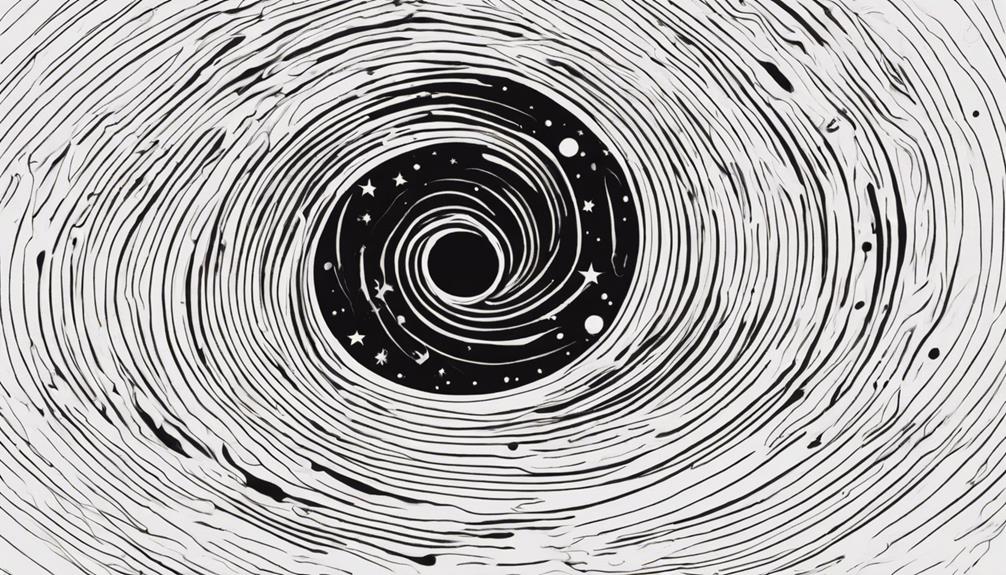
The intricate web of cosmic uncertainty surrounding the fate of the universe offers a glimpse into the vast array of speculative theories and potential outcomes. As scientists grapple with enigmatic forces like dark energy and dark matter, the realm of possibilities for the universe's end expands exponentially. From the enigmatic Big Bounce hypothesis to the unsettling concept of vacuum decay, the universe's ultimate destiny remains shrouded in a veil of ambiguity, challenging our understanding of the cosmos.
Endless Cosmic Possibilities
Amidst the cosmic uncertainty surrounding the universe's ultimate fate, a myriad of speculations and possibilities continue to captivate the minds of astrophysicists and cosmologists alike.
- Big Freeze: One possibility is the universe continues expanding at an accelerating rate until it reaches a state of maximum entropy, known as the Heat Death or Big Freeze.
- Big Rip: In this scenario, dark energy causes the universe's expansion to accelerate so rapidly that it tears apart all cosmic structures, including galaxies, stars, and eventually even atoms.
- Vacuum Decay: Speculations also suggest that the universe's current vacuum state might not be stable, leading to a catastrophic event where the existing laws of physics change suddenly, causing everything to disintegrate.
These scenarios highlight the diverse range of potential outcomes that researchers are exploring within the realm of theoretical models.
Theories on Cosmic Fate
Exploring the intricate tapestry of theoretical models, astrophysicists delve into the enigmatic realm of cosmic uncertainty and speculations regarding the ultimate fate of the universe. Factors such as dark energy, dark matter, and the cosmological constant contribute to the ambiguity surrounding the cosmic destiny. Theories on cosmic endings, including the Big Freeze and the Big Rip, present diverse possibilities for the universe's ultimate outcome. Observations of cosmic microwave background radiation and supernovas are crucial in deciphering these potential fates. Theoretical physicists propose scenarios like the Big Crunch, Big Bounce, and vacuum decay to speculate further on how the universe may meet its end. Despite uncertainties, ongoing research and observations persist in shedding light on the cosmic fate that awaits the universe.
The Role of Cosmological Constant
In the intricate fabric of the cosmos, the cosmological constant emerges as a fundamental parameter shaping the evolution and eventual fate of our universe.
Key Points:
- Einstein's Contribution: Introduced by Einstein, the cosmological constant characterizes the energy density of empty space, exerting a repulsive force that counteracts gravity. This force plays a pivotal role in determining the expansion rate of the universe.
- Dark Energy Influence: Dark energy, a mysterious form of energy permeating space, is a leading candidate for the cosmological constant. It is believed to be the driving force behind the observed accelerated expansion of the universe.
- Predicting the Future: Understanding the cosmological constant is paramount for forecasting the fate of our universe and how it will eventually meet its end. The intricate interplay between the cosmological constant, dark energy, and the distribution of matter within the cosmos ultimately shapes the destiny of the universe.
Observations on the Universe's Fate
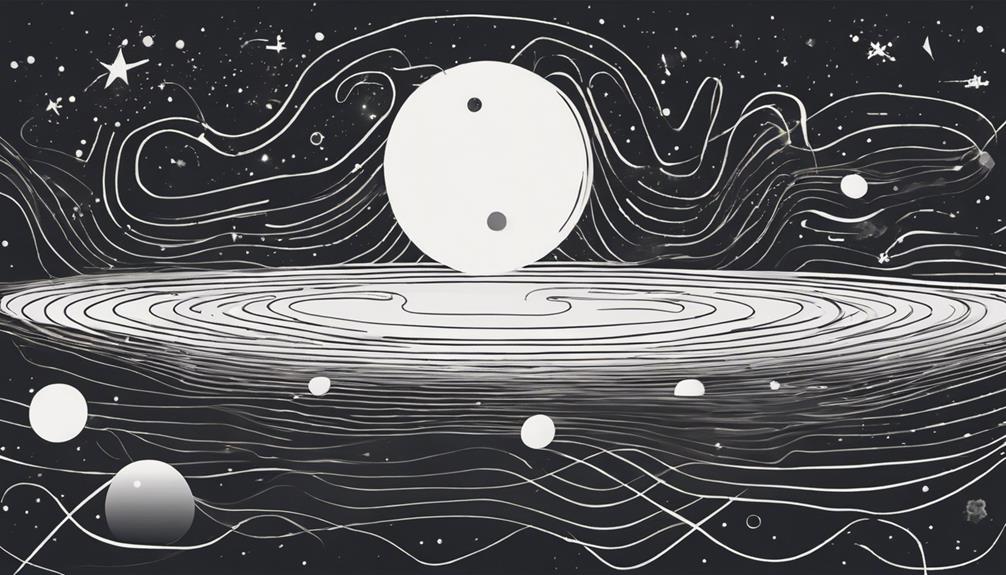
The fate of the universe, as dictated by observable phenomena and theoretical frameworks, is a subject of intense scrutiny and speculation within the scientific community. Observations like the expanding universe, supported by Edwin Hubble, have solidified the Big Bang theory, which in turn influences predictions about the universe's ultimate destiny. The discovery of cosmic microwave background radiation by Arno Penzias has provided crucial evidence for the Big Bang theory and has significantly shaped our understanding of the universe's evolution. Additionally, the presence of dark energy, unveiled in the late 1990s, is a pivotal factor in determining the universe's eventual fate, leading to scenarios like the Big Freeze.
| Observable Phenomena | Implications |
|---|---|
| Expanding Universe | Supports Big Bang theory |
| Cosmic Microwave Background Radiation | Key evidence for Big Bang theory |
| Dark Energy | Influences universe's destiny |
| Dark Matter | Adds complexity to predictions |
These observations, along with galaxy clustering, distant supernovas, and cosmic microwave background anisotropies, serve as essential observational constraints for evaluating the potential outcomes related to the universe's end. The enigmatic nature of dark energy and dark matter introduces uncertainties, underscoring the persistent challenges in comprehending the cosmos.
Repulsive Force in Cosmology
Observations of distant supernovas have unveiled a fundamental aspect of cosmology—a repulsive force known as dark energy that drives the universe's accelerating expansion. This mysterious energy exerts a repulsive force counteracting gravity, causing galaxies to move away from each other at an ever-increasing speed. Key points to consider about this repulsive force in cosmology include:
- Counteracting Gravity: Dark energy acts in opposition to gravity, pushing galaxies apart and contributing to the universe's expansion.
- Supernova Evidence: The discovery of dark energy was made possible through observations of distant supernovas, which provided insight into the universe's accelerated expansion.
- Cosmological Constant: The cosmological constant, linked to dark energy, plays a crucial role in maintaining this repulsive force on a cosmic scale and influencing the fate of the universe. Understanding the nature of this force is essential in unraveling the ultimate destiny of our cosmos.
The Shape of the Universe Insights
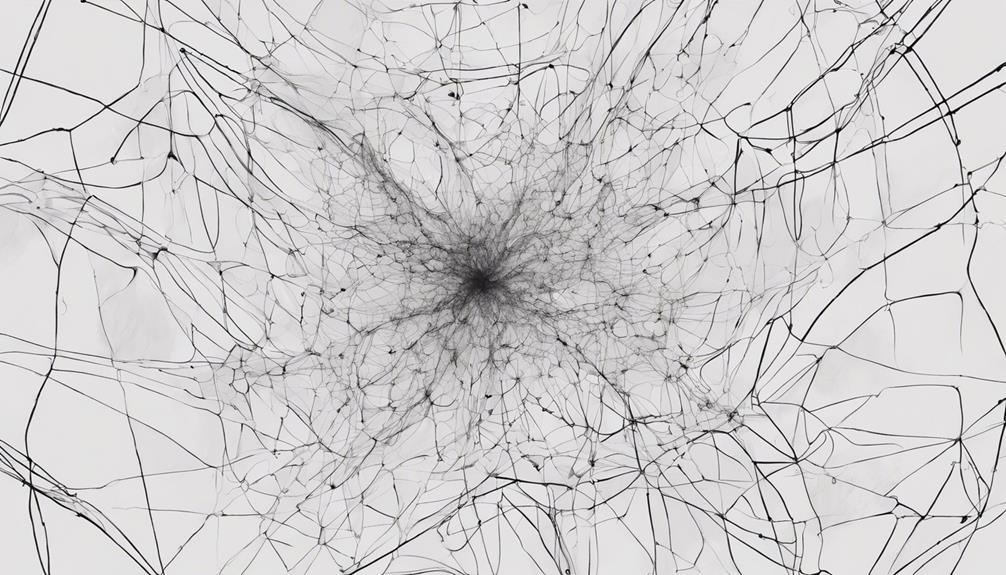
The shape of the universe holds profound implications for its ultimate demise, with open, flat, or closed geometries dictating different trajectories. By scrutinizing cosmic microwave background anisotropies, scientists gain insights into the universe's spatial curvature and potential fate. Understanding the universe's shape not only reveals its structural intricacies but also sheds light on the diverse cosmic scenarios that could unfold in its distant future.
Universe's Geometric Structure
Evidenced by cosmic microwave background anisotropies, the universe's geometric structure holds crucial implications for its ultimate fate.
Key Insights:
- The concept of omega, the density parameter, plays a pivotal role in determining the universe's geometric structure and eventual destiny.
- Dark matter and energy distribution influence the geometric properties of the universe, affecting its shape and evolution.
- Understanding the geometric structure through observations of galaxy clustering provides valuable insights into the expansion, potential curvature, and overall future of the universe.
These factors, intertwined with the universe's geometric structure, offer a glimpse into the intricate mechanisms that shape our cosmos and steer it towards its inevitable conclusion.
Curvature and Expansion
Amidst the cosmic tapestry of possibilities, the curvature and expansion of the universe unfurl a narrative of profound implications for its ultimate fate. The shape of the universe, whether open, flat, or closed, is intricately tied to its destiny. A flat universe, with a critical density, will continue expanding indefinitely. Conversely, an open universe with negative curvature signifies eternal expansion, leading to a Big Freeze scenario. On the other hand, a closed universe with positive curvature may eventually face a Big Crunch if gravity triumphs over expansion. The balance between matter density and cosmic expansion determines the universe's shape, influencing the grand scheme of its existence.
| Curvature | Density | Expansion |
|---|---|---|
| Open | Low | Eternal |
| Flat | Critical | Indefinite |
| Closed | High | Destiny |
Cosmic Topology Concepts
In the exploration of cosmic topology concepts, a profound understanding of the universe's spatial structure unveils intricate insights into its shape and potential trajectories towards ultimate fate.
3 Intriguing Insights:
- Cosmic Microwave Background Radiation: Observations of this radiation aid in deciphering the geometry of the universe, providing clues to its overall structure.
- Influence on Ultimate Fate: The cosmic topology, whether open, flat, or closed, plays a pivotal role in determining the destiny of the universe and how it might meet its end.
- Relation to Dark Matter: Dark matter, an enigmatic component of the universe, interacts with the cosmic topology, affecting the evolution of the expanding universe and contributing to its overall shape.
Closed Universe Possibilities
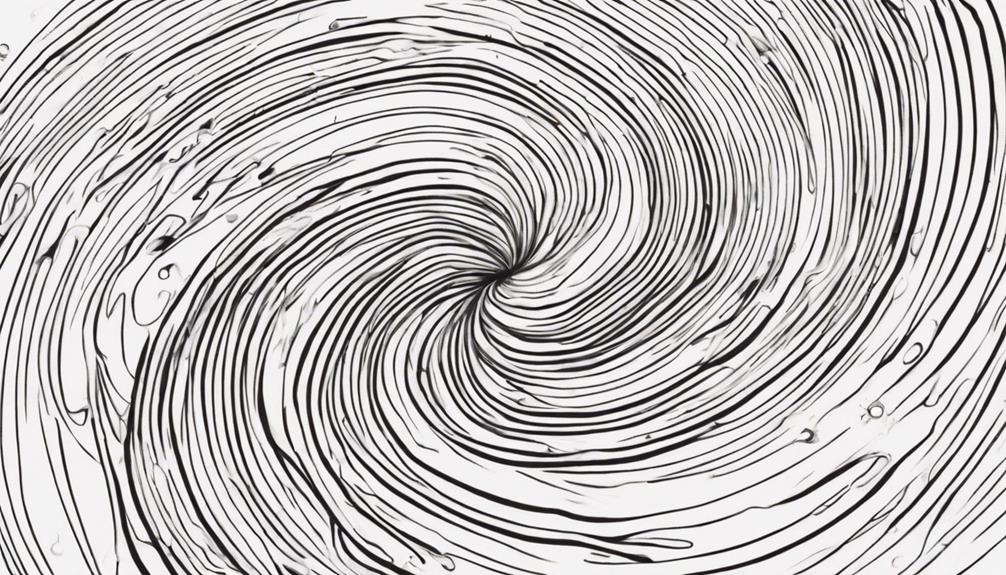
Within the realm of cosmological possibilities, a closed universe presents an intriguing scenario where the curvature of space plays a defining role in determining the fate of the cosmos. In a closed universe, the curvature of space-time leads to a finite but unbounded cosmos, where gravitational forces may eventually overpower the expansion of the universe. This dominance of gravity could culminate in a dramatic collapse into a singularity known as the Big Crunch. The density parameter omega, a key factor in cosmology, is crucial in understanding the fate of a closed universe. When omega exceeds 1, it suggests a closed geometry, indicating that the universe will ultimately contract due to gravitational forces. Observations of cosmic microwave background radiation and galaxy distributions provide valuable insights into determining the curvature of the universe and the likelihood of a Big Crunch scenario. The interplay between gravity and cosmic expansion in a closed universe sets the stage for a dramatic and cataclysmic end to the cosmos.
| Curvature of Space | Finite Cosmos | Gravitational Forces |
|---|---|---|
| Collapse into Singularity | Density Parameter Omega | Big Crunch |
Open Universe Potential
The transition from contemplating the closed universe's potential collapse to the open universe's eternal expansion reveals a stark contrast in the cosmic fate dictated by the interplay of dark energy and gravitational forces. In an open universe, dark energy's repulsive nature continuously counteracts gravity, propelling cosmic expansion into an indefinite future. This scenario sets the stage for the chilling prospect of the Big Freeze, a state where temperatures gradually approach absolute zero, rendering the cosmos inhospitable to life.
Key Points:
- Endless Expansion: Dark energy's influence in an open universe drives a perpetual expansion that defies a finite end, painting a picture of eternal cosmic growth.
- Big Freeze Scenario: The open universe leans towards the Big Freeze outcome, suggesting a future where energy dissipates, and temperatures plummet towards extreme coldness.
- Observational Support: The concept of an open universe finds validation in observations of distant galaxies and the cosmic microwave background radiation, providing tangible evidence for this cosmic fate.
The ultimate destiny of the open universe hinges on the delicate balance between dark energy, matter distribution, and the ongoing cosmic expansion.
Flat Universe Predictions
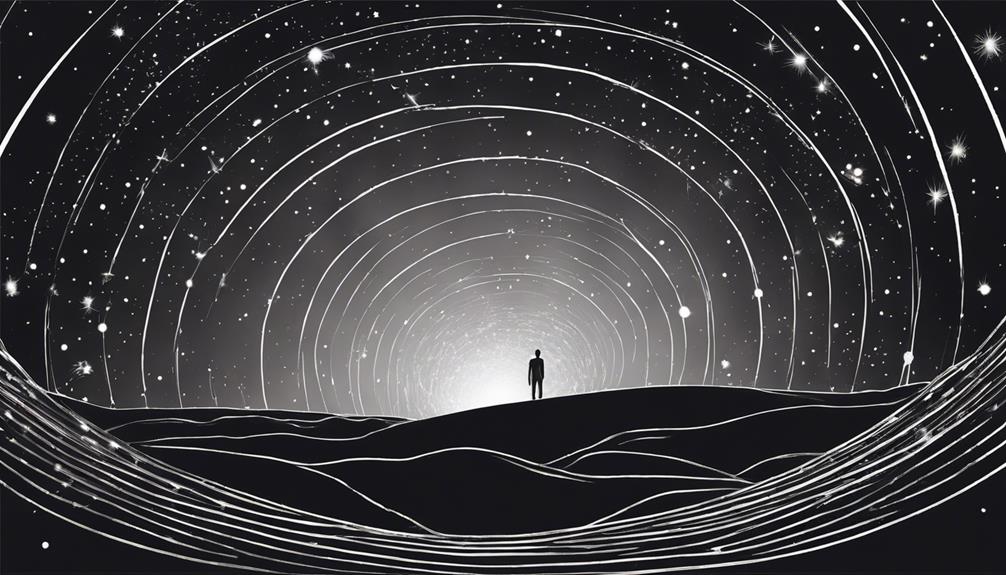
A flat universe, characterized by a critical total density resulting in a spatially flat geometry, holds profound implications for the cosmic framework's fundamental structure and evolution. This critical value of total density suggests that the universe's geometry is such that parallel lines remain parallel and maintain the same distance, reflecting an underlying Euclidean geometry on large scales. Observations align with the concept of a flat universe, where the combined effects of matter, energy, and curvature components appear to balance out, indicating a universe on the verge of spatial flatness.
To further illustrate the significance of a flat universe, consider the following table:
| Implications of a Flat Universe |
|---|
| Consistent with inflationary models |
| Aligns with cosmic microwave background radiation observations |
| Indicates a critical density for the universe's fate |
| Reflects a balanced total density |
| Implies a Euclidean geometry on large scales |
Understanding the spatial flatness of the universe plays a pivotal role in unraveling the ultimate destiny and evolutionary path of the cosmos.
Theories on the End of the Universe
Amidst the vast expanse of cosmic possibilities, theories abound regarding the eventual demise of the universe.
Theories on the End of the Universe
- Big Crunch: The Big Crunch theory suggests a scenario where the expansion of the universe eventually halts and reverses, leading to a collapse back into a hot, dense state. This concept is driven by the gravitational forces within the universe.
- Big Freeze: In contrast, the Big Freeze theory predicts a fate where the universe continues to expand indefinitely. This expansion would result in a cold, dark, and empty cosmos as all stars eventually burn out, leaving the universe in a state of lifelessness.
- Big Rip: The Big Rip hypothesis proposes a dramatic end to the universe caused by the expansion accelerating to the point where it tears apart galaxies, solar systems, and eventually atoms themselves. This theory foresees a cataclysmic unraveling of the fabric of the cosmos.
These theories, shaped by observations like Edwin Hubble's, offer intriguing perspectives on the universe's fate, sparking contemplation on the mysteries that lie ahead.
Possible Cosmic Fates

Exploring the potential cosmic fates of the universe unveils a tapestry of intriguing and cataclysmic possibilities. One such fate is the Big Freeze, where dark energy drives eternal expansion, leading to a universe that is cold, dark, and devoid of life. In contrast, the Big Rip theory presents a scenario where dark energy's exponential growth results in the violent tearing apart of spacetime, ultimately disintegrating all matter. The Big Crunch hypothesis, although less favored today, suggests a universe collapsing under gravity's pull, culminating in a fiery singularity. Additionally, concepts like vacuum decay, false vacuum collapse, phase transitions, and multiverse theories propose equally dramatic and catastrophic ends for the cosmos. Despite these varied theories, the ultimate fate of the universe remains uncertain, with different hypotheses offering diverse visions of how the universe might meet its end. As science continues to probe the mysteries of dark energy and cosmic evolution, the true destiny of our universe is yet to be definitively determined.
Observational Constraints on Theories
Undoubtedly, the meticulous examination of galaxy clustering and cosmic microwave background anisotropies stands as a cornerstone in refining our understanding of the universe's potential fates. Observational constraints on theories encompass a wide array of factors that influence the universe's evolution and ultimate demise.
Key Observational Constraints:
- Dark Matter and Dark Energy: The interplay between these enigmatic components shapes the universe's fate, with dark energy potentially driving an ever-accelerating expansion, contrasting dark matter's gravitational pull.
- Density Parameter Omega: The balance between the actual density of the universe and the critical density affects its overall geometry and final destiny, whether it be a Big Crunch, Big Freeze, or Big Rip scenario.
- Cosmological Constant: The presence of a cosmological constant, representing the energy density of the vacuum, influences the universe's expansion rate and ultimate fate, adding complexity to observational constraints.
These observational constraints provide a framework for exploring diverse scenarios and refining cosmological theories, yet uncertainties persist, leaving room for alternative models and interpretations.
Frequently Asked Questions
Will the Big Rip Happen?
The Big Rip remains a compelling topic in cosmology, exploring the potential cosmic destruction due to cosmic expansion and escalating energy density. This scenario hinges on the concept of phantom energy overpowering gravitational forces, leading to an event horizon where even atoms are torn apart. The ultimate fate of the universe is uncertain, with ongoing research shedding light on the possibility of this catastrophic event occurring billions of years in the future.
What Is Beyond the Universe?
In the exploration of what lies beyond the universe, theoretical frameworks such as multiverse theories, parallel dimensions, and infinite possibilities arise. Cosmic expansion, quantum fluctuations, and the concept of existence beyond boundaries challenge traditional perceptions of reality. The consideration of higher dimensions and the potential existence of other universes prompt contemplation of the fundamental nature of existence and the limits of human understanding in the realm of theoretical physics and cosmology.
How Old Is the Universe and How Long Will It Last?
The universe, estimated to be 13.8 billion years old, follows the expansion theory, suggesting continued growth influenced by dark energy. Observations of cosmic microwave background radiation and distant supernovas help construct the cosmic timeline. The universe's finite lifespan is projected to lead to the heat death scenario over trillions of years. Factors like dark energy and galactic collisions are critical in determining the timeline for the universe's ultimate fate within the observable universe.
How Will the Universe End Nasa?
In contemplating the universe's ultimate fate, NASA's research delves into future predictions based on scientific theories derived from cosmic timelines. By exploring various end scenarios through space exploration, NASA extrapolates potential outcomes for the cosmos. Through meticulous study and observation, NASA aims to unravel the mysteries surrounding the universe's eventual demise, shedding light on the intricate web of possibilities that may shape the universe's destiny.
Conclusion
In the intricate tapestry of the cosmos, the threads of fate weave a narrative of uncertainty and speculation. From the chilling embrace of the Big Freeze to the cataclysmic fury of the Big Rip, the universe's ultimate destiny remains a mystery waiting to be unravelled. As we gaze upon the vast expanse of the universe, we are reminded that our existence is but a fleeting moment in the grand cosmic symphony, where endings are beginnings in disguise.
